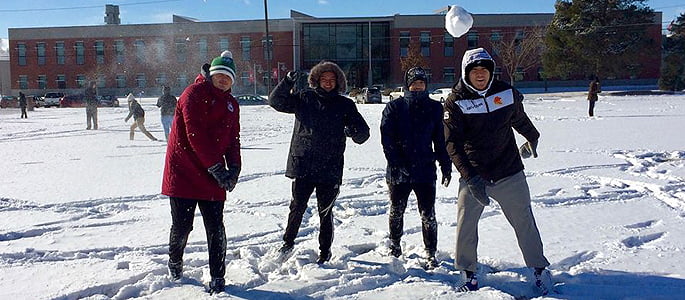
Laptops, iPhones and other electronic devices are staples in today’s society, but some argue these devices may be more dangerous than we think. In the January Term (J-Term) course PSY 302 “Technology, Nature and Development: Disconnect to Reconnect,” Hastings College students explored these major mainstays in their everyday lives — and discovered the true effects of their technological interactions.
The course is taught by Dr. Stephanie Furrer, a psychology professor at Hastings College who specializes in childhood development. It originated as an interdisciplinary exploration of nature and technology’s roles in the development of children. The curriculum evolved when Furrer witnessed her college-aged students interacting with technology in ways that, in some regards, were concerning.
“I noticed that students were on their phones before class started and right after class got out. I reflected on my own college experiences, and remembered how we used that time to talk and just get to know each other. I was a little bit sad thinking about how today’s students might be missing out on the opportunities to get to know the people around them,” Furrer said. “That’s when I began to realize that this wasn’t just for kids, but young adults and adults, as well.”
Furrer connected her background in development and her interest in nature to address her concerns about technology. Amy Sandeen, executive director of Prairie Loft, a nonprofit organization in Hastings geared toward outdoor education, joined forces with Furrer to help guide the new curriculum.
Now, the class offers students the chance to disconnect from their devices, build bonds with their peers and get outside, all while learning the benefits these actions have in their daily lives. It is popular among students from all disciplines, and most leave with positive feelings about their experiences
“One student said it is a class every first-year student should take. That’s a pretty big compliment,” Furrer said.
Technology-free connections
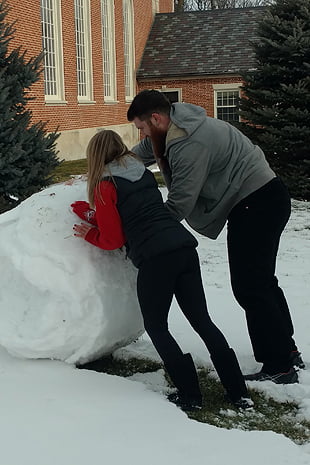
The primary focus of the class, as the title suggests, is connecting. Many activities encourage interaction between all parties in the classroom. All participants must leave their phones at the door. Free from the distraction of technology, Furrer said, students are able to truly connect with one another.
“If you throw a bunch of students in a room with their phones, almost everyone will just play around on their devices. When you take the phones away, everyone starts chatting and you actually learn about the people in your class,” said Alex Wellington, a junior agribusiness major who took the class in January 2016.
Wellington said he developed deeper friendships with the students more quickly in his J-Term course than with other students in a class during the regular semester. Furrer said she often received feedback like this from students.
Student-to-student friendships are not the only connections to form in the technology-free zone, though. For Furrer, the atmosphere of the class allows her to interact with students in different ways than a regular course. She said it fosters a closer, more mentoring relationship between her and the students.
“I’ve taken many courses with Dr. Furrer before this class, but during the class, we were all required to call her ‘Stephanie,’ which added a more personal vibe to our relationship,” said Kailen Soncksen, a junior religion and health systems double major who took the class in 2017. “I would say that my friendship with Dr. Furrer developed more during this class, especially because we had opportunities to share more about ourselves and our passions than in other classes.”
Balancing blue light and sunlight
In addition to connecting with each other, the course connects each student with nature. Sandeen’s mantra to “balance the blue light with the sunlight” comes into play as the class learns about nature’s rejuvenating ability.
“Attention restoration theory says that environments that evoke a lot from your senses also take a lot of your attentional resources, leading to a mental exhaustion. That’s why you feel grumpy and fatigued after interacting with a busy city street or a cell phone screen,” Furrer said. “Additionally, the theory says that when you immerse yourself in an environment that’s soothing and calm, like nature, it will replenish those attentional reserves, improve your mood and restore your cognitive processing ability.”
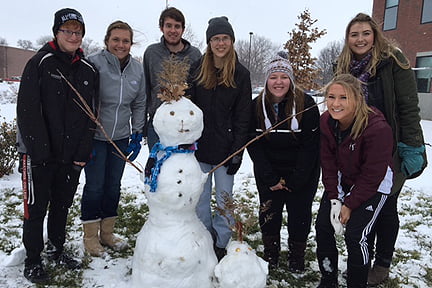
One of the texts the class reads is “The Nature Principle” by Richard Louv. Louv is a leading voice for the “Nature Deficit Disorder” movement. The text explains the physical and psychological benefits of nature. Then, the students get first-hand experience learning about nature’s benefits by interacting with nature during class “field trips” to Prairie Loft and other outdoor locations.
Despite the winter weather, the class spends plenty of time outdoors. Some of Furrer’s favorite class memories are rooted in the spontaneous events of the chilly days spent outside, including snowball fights and snow sculpture contests.
“It is really quite amazing that, just as the literature suggests, when you send people outside they become more creative,” Furrer said. “It’s just so fun to see the students play, and it’s something we know is important to development and overall well-being.”
Linking lessons at Lied Lodge
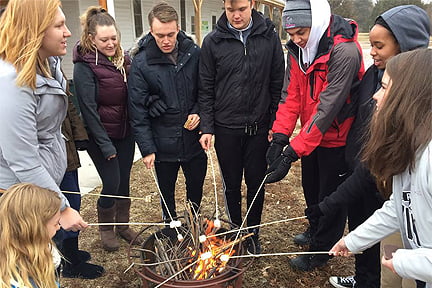
The class culminates in an overnight trip to Lied Lodge in Nebraska City, Nebraska. While at the lodge, students explore Arbor Day Farms, go on a night hike, share personal stories around the campfire and spend the evening “just hanging out” together. Furrer and Sandeen encourage a social media fast so students can experience the overnight trip without any electronic distractions.
“Lied Lodge is where we really connected. It was very fun, and pretty much the hit of the class,” Wellington said.
At the end of January, students walk away with new friendships and a deeper understanding of how technology and nature affect them. Soncksen said her biggest takeaway was the healthy habits she developed in the class. She now recognizes how much time she spends with technology, and she actively tries to balance her screen time with outdoor activities.
“This class is so important for students to take because I don’t think any of us realize how big of an impact is has on our social and cognitive abilities,” Soncksen said. “It can be difficult to limit screen time, but this class offers a new perspective of the world and how we should be interacting with technology and each other.”

